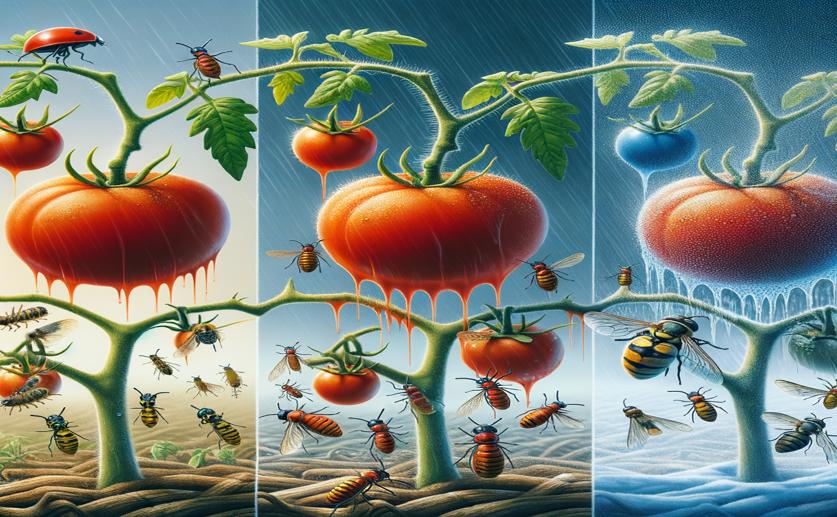
Impact of Changing Temperatures on Tomato Pests and Pest Control Strategies
Greg Howard
14th August, 2024

Image Source: Natural Science News, 2024
Key Findings
- The study in the Eastern Himalayan Region of India found that lower altitudes experienced earlier and more severe tomato fruit borer infestations, causing significant fruit damage
- Higher maximum temperatures were linked to increased fruit borer incidence and greater fruit damage
- Among the tomato varieties tested, Cherry tomato and MT-2 showed the least fruit damage, while MT-3 and MT-2 had the highest yields across all locations
AgricultureEnvironmentPlant Science
References
Main Study
1) Influence of shifting thermal regimes on tomato fruit borer, Helicoverpa armigera (Hubner) in the Eastern Himalaya: implications for pest management strategies.
Published 13th August, 2024
https://doi.org/10.1007/s00484-024-02741-2
Related Studies
2) High temperature effects on photosynthetic activity of two tomato cultivars with different heat susceptibility.
Journal: Journal of plant physiology, Issue: Vol 162, Issue 3, Mar 2005
3) Vitamin C content in plants is modified by insects and influences susceptibility to herbivory.



 28th July, 2024 | Jenn Hoskins
28th July, 2024 | Jenn Hoskins